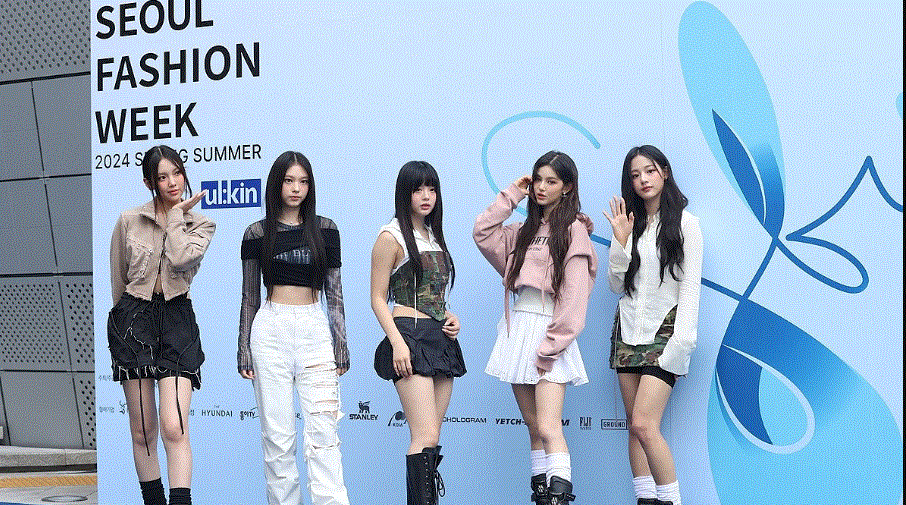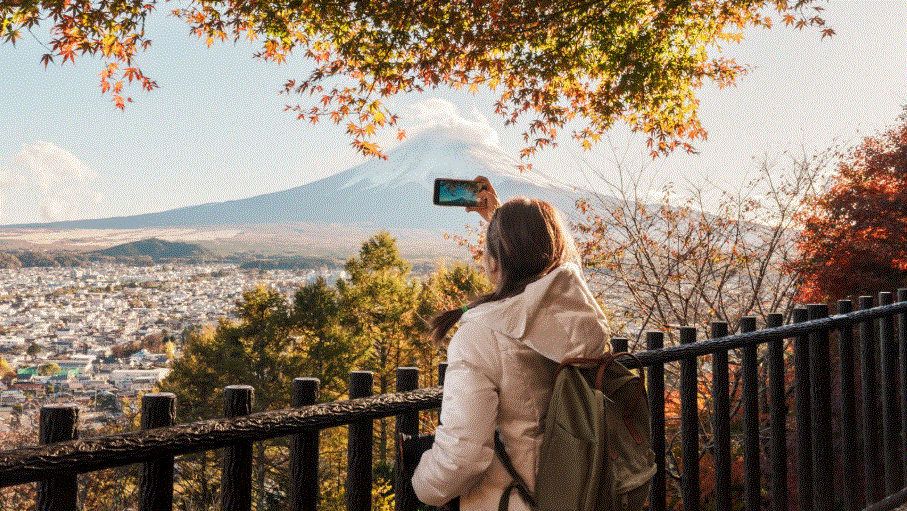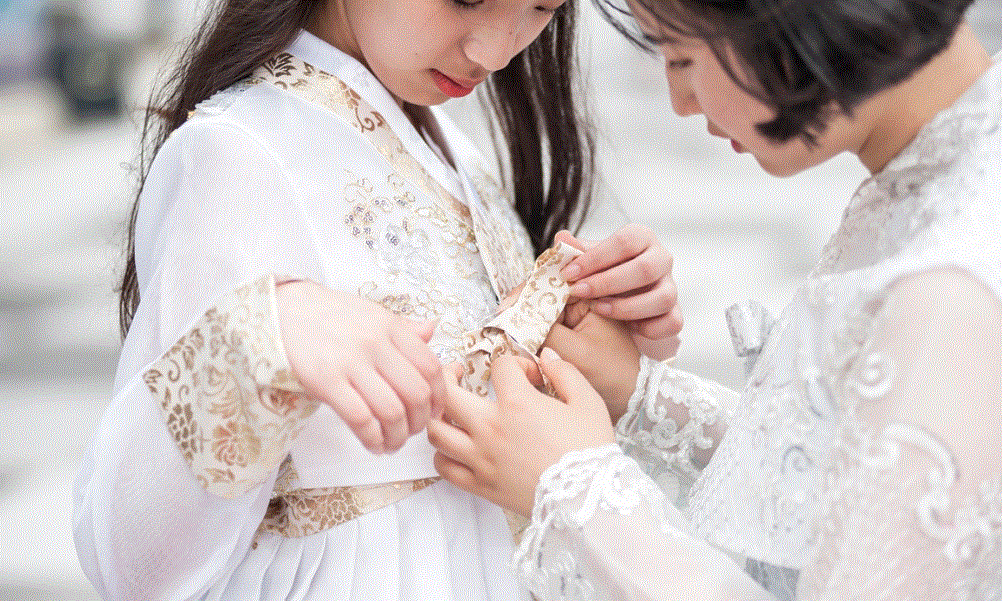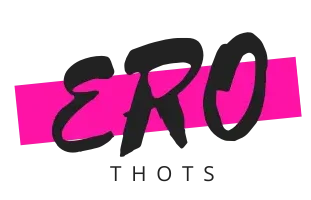As a travel blogger and fashion enthusiast, I recently went on an unforgettable tour covering both Seoul Fashion Week and Rakuten Fashion Week Tokyo. One of my biggest concerns was staying connected throughout this fashion-filled adventure, which is why I invested in a tourist eSIM for Japan and Korea. This decision proved invaluable as I navigated between runway shows, designer meetups and cultural explorations.
I found that having reliable internet access was crucial not just for posting my fashion week coverage on social media, but also for connecting with fellow fashion journalists, checking show schedules and finding my way around both cities. If you’re planning a similar trip, I can’t stress enough how important it is to sort out your connectivity before departure. During my trip, I discovered that most fashion week venues had specific entrance requirements and constantly updated schedules that I needed to access on the go, making my tourist eSIM for Japan and Korea an absolute lifesaver.
Starting in Tokyo: At Rakuten Fashion Week

My trip began in Tokyo during the prestigious Rakuten Fashion Week and I was immediately swept up in the city’s unique blend of avant-garde fashion and traditional aesthetics. Between shows, I made time to explore the fashion districts that make Tokyo a global style capital. I spent my mornings in Harajuku, where I witnessed street fashion at it’s finest – from dramatic gothic Lolita ensembles to minimalist contemporary looks that would soon hit the runways. The experience was unlike anything I’d seen in my years of fashion coverage. Here’s a breakdown of my favorite fashion spots in Tokyo:
| District | Fashion Style | Best Time to Visit | Must-See Locations |
| Harajuku | Street Style/Youth Fashion | 10 AM – 4 PM | Takeshita Street, LaForet |
| Shibuya | Contemporary/Trendy | 2 PM – 8 PM | PARCO, Shibuya 109 |
| Ginza | Luxury/High-End | 11 AM – 7 PM | Dover Street Market, Ginza Six |
Discovering Kyoto’s Timeless Beauty

While the runway shows were spectacular, I discovered that Tokyo’s real fashion scene lives in it’s streets and local boutiques. Using my tourist eSIM for Japan and Korea, I created a digital fashion map of must-visit spots that had caught my eye on local style blogs. One particularly memorable afternoon, I found myself in Shimokitazawa, a neighborhood that fashion insiders had recommended for it’s vintage stores and indie designer boutiques. Here, I stumbled upon several hidden gems:
- Vintage shops in Koenji: Where I found unique pieces that perfectly complemented the runway trends I’d been covering
- Cat Street: A fashion lover’s paradise where I spotted several Fashion Week attendees shopping between shows
- Daikanyama T-Site: An architectural marvel housing curated fashion magazines and style books
Kyoto’s Fashion Heritage

Between the two fashion weeks, I decided to take a creative detour to Kyoto, where I discovered how traditional Japanese craftsmanship influences modern fashion. Thanks to my tourist eSIM for Japan and Korea, I connected with local textile artists who showed me the intricate process of kimono making. What fascinated me most was seeing how contemporary designers at Rakuten Fashion Week had incorporated these traditional techniques into their collections. Here’s what my fashion-focused day in Kyoto typically looked like:
| Time | Activity | Fashion Connection |
| 9 AM | Nishijin Textile Center | Learning about traditional weaving techniques |
| 12 PM | Kimono Forest at Arashiyama | Photographing modern textile installations |
| 3 PM | Gion District | Observing contemporary maiko fashion |
| 6 PM | Modern Kimono Boutiques | Seeing fusion fashion pieces |
The textile masters I met shared insights about sustainable fashion practices that have been part of Japanese culture for centuries. This knowledge proved invaluable when I later interviewed designers at both fashion weeks about their sustainable collections.
Seoul Fashion Week

Landing in Seoul for Fashion Week felt like stepping into a different fashion universe. While Tokyo’s fashion scene embraced avant-garde experimentation, Seoul’s runways showcased a perfect blend of streetwear and luxury. I noticed how K-pop’s influence on fashion was evident in every show I attended. Using my tourist eSIM for Japan and Korea, I maintained a hectic schedule of:
- Navigating between multiple show venues across the Dongdaemun Design Plaza
- Live-streaming behind-the-scenes interviews with emerging designers
- Coordinating with other fashion bloggers for street style photography sessions
- Updating my blog with runway trends in real-time
K-Beauty and Fashion

Between fashion shows, I immersed myself in Seoul’s beauty and fashion culture. The Myeongdong district became my second home, where I discovered why Seoul is considered Asia’s beauty capital. What surprised me most was how seamlessly beauty and fashion intertwined in Korean culture. During my coverage of Seoul Fashion Week, I noticed that many designers collaborated with beauty brands to create complete looks. Here are some of my favorite discoveries:
| Beauty District | Fashion Integration | Must-Try Experiences |
| Myeongdong | Fashion-forward skincare | LED facial treatments |
| Garosu-gil | Boutique beauty concepts | Custom perfume making |
| Hongdae | Indie beauty brands | K-pop inspired makeovers |
Korean Street Fashion in Hongdae

After the intensity of Seoul Fashion Week, I found myself drawn to Hongdae’s vibrant street fashion scene. As a fashion blogger, I was amazed by how university students mixed high-end pieces with vintage finds. Using my tourist eSIM for Japan and Korea, I documented these unique style combinations for my blog readers. What struck me most was how different the street fashion was from the runway looks I’d just covered. Young fashionistas would combine:
| Street Style Element | Styling Approach | Popular Brands |
| Oversized Blazers | Paired with cargo pants | ADER Error, Gentle Monster |
| Vintage Band Tees | Layered with mesh tops | Local thrift finds |
| Platform Sneakers | Styled with midi skirts | Nike collaborations |
| Statement Bags | Mixed with casual wear | Korean indie designers |
My daily explorations revealed how Seoul’s youth culture shapes fashion trends long before they hit international runways. I spent hours interviewing street style icons and sharing their innovative approaches to fashion on my social media.
Busan’s Fashion Scene: A Coastal Perspective

After Seoul’s high-energy fashion week, I headed to Busan to explore Korea’s second-largest fashion market. What I discovered was a refreshing take on coastal fashion that differed from Seoul’s metropolitan style. Thanks to my tourist eSIM for Japan and Korea, I connected with local designers who showed me how Busan’s port city identity influences their collections. Here’s what made Busan’s fashion scene unique:
- The fusion of maritime themes with contemporary streetwear
- A more relaxed approach to layering, perfect for the coastal climate
- Innovative use of sustainable materials inspired by ocean conservation
- Strong influence of surf culture on local fashion brands
Seomyeon Fashion Street became my favorite spot for discovering emerging designers who weren’t represented at Seoul Fashion Week. I spent entire afternoons documenting how Busan’s fashion scene offers a fresh perspective on Korean style.
How My Tourist eSIM Enhanced the Experience

Throughout my fashion week trip, having a reliable tourist eSIM for Japan and Korea proved invaluable. Here’s how it transformed my fashion coverage:
| Usage | Benefit | Fashion Week Application |
| Real-time Updates | Immediate show coverage | Live runway reports |
| Navigation | Easy venue location | Finding hidden showrooms |
| Social Media | Constant engagement | Street style sharing |
| Research | Trend verification | Designer background checks |
Jeju Island Combination of Fashion and Nature

After the whirlwind of both fashion weeks, I chose to decompress in Jeju Island, where I discovered an emerging sustainable fashion movement. Using my tourist eSIM for Japan and Korea, I connected with local artisans who are revolutionizing traditional craft techniques for modern fashion. What fascinated me most was how Jeju’s natural landscapes influence local designers:
| Natural Element | Fashion Inspiration | Sustainable Practice |
| Volcanic Rock | Black-dyed textiles | Natural dyeing processes |
| Native Plants | Organic patterns | Local fiber sourcing |
| Ocean | Recycled materials | Marine waste fashion |
| Wind | Flowing silhouettes | Zero-waste cutting |
I spent my mornings interviewing craftswomen who showed me how they’re incorporating haenyeo (female diver) elements into contemporary fashion pieces – a beautiful blend of tradition and modernity that I hadn’t seen at either fashion week.
Final Reflections: The Future of Asian Fashion
Looking back at my trip through Japan and Korea’s fashion weeks, I’m struck by how technology and tradition weave together in these fashion capitals. My tourist eSIM for Japan and Korea wasn’t just about staying connected – it became an essential tool for documenting the evolution of Asian fashion. Here’s what I learned:
| Fashion Element | Tokyo Trends | Seoul Trends |
| Sustainability | Tech-forward solutions | Traditional craftsmanship |
| Street Style | Avant-garde experimentation | K-pop influence |
| Color Palettes | Muted minimalism | Bold color blocking |
| Textile Innovation | Smart fabrics | Upcycled materials |
Future Fashion Week Tips
For those planning to attend future fashion weeks in Asia, I recommend:
- Following official fashion week accounts for early registration opportunities
- Connecting with local fashion bloggers before arrival
- Studying previous seasons’ shows for context
- Planning your content strategy before the chaos begins
My tour through the fashion capitals of East Asia showed me how digital connectivity through a tourist eSIM for Japan and Korea can enhance the fashion week experience. From live-streaming runway shows to discovering hidden boutiques, staying connected helped me share these incredible fashion moments with my readers in real-time.
